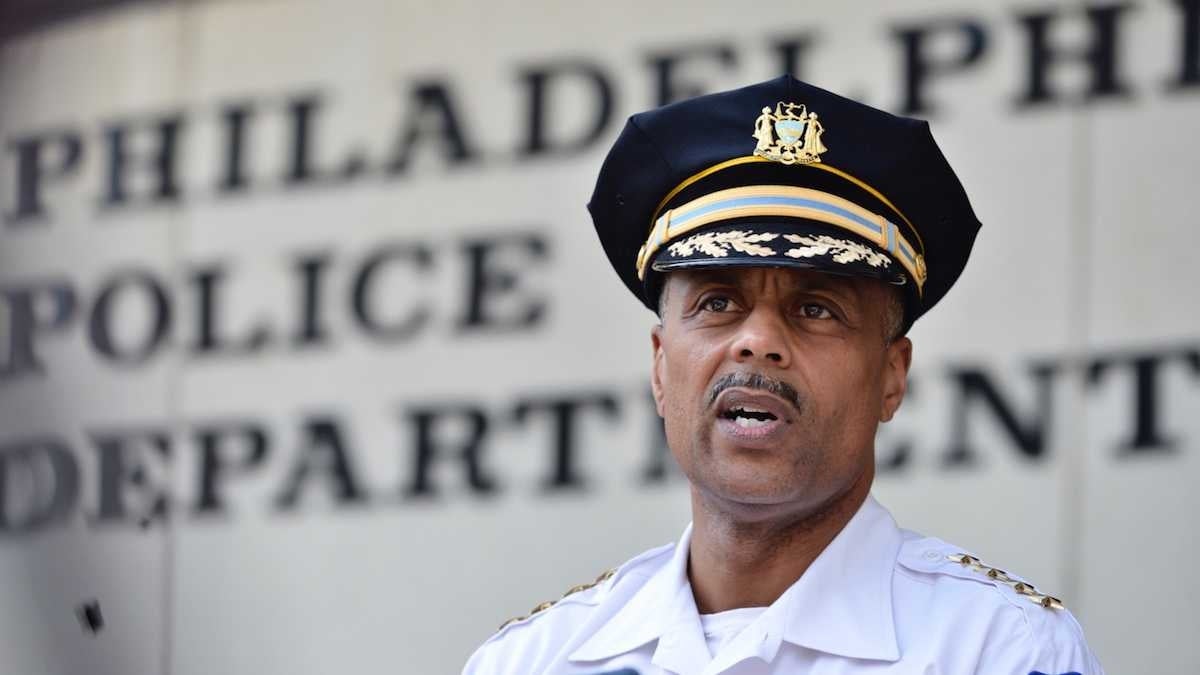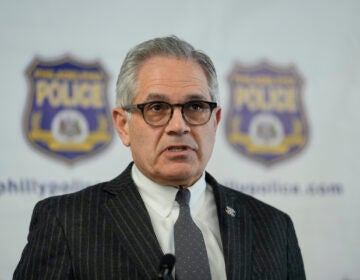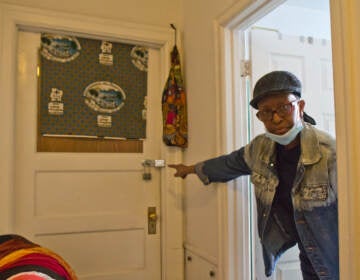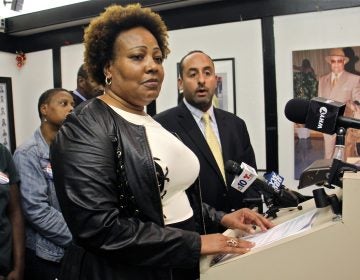ACLU report on Philly stop-and-frisk is nothing to celebrate

Philadelphia Police Commissioner Richard Ross says some of the new stop-and-frisk training and auditing that began in 2016 is starting to pay off, but the department's work is far from over. (Bastiaan Slabbers for NewsWorks)
A report published last week by the ACLU of Pennsylvania to the Eastern District Court of Pennsylvania shows that stop-and-frisk in Philadelphia is racially biased and done in an unconstitutional manner.
In 2010, the ACLU of Pennsylvania and the Kairys, Rudovsky, Messing & Feinberg law firm filed a federal class action lawsuit against the City of Philadelphia and on behalf of eight black and Latino men who were racially profiled. The case, Bailey, et al. v. City of Philadelphia, et al., ended in a settlement agreement that mandated data collection and a yearly report on stop-and-frisk practices. This year’s report looks at data from the second half of 2016.
Some key figures from the report:
- Philadelphia Police Department (PPD) stopped 57,828 pedestrians in the second half of 2016, a 35 percent decline from the first half of 2016.
- The racial distribution of the stops was very similar to 2015: 70 percent black, 23 percent white, 7 percent Latino.
- The average person stopped is a 33-year-old black male.
- Black pedestrians are stopped twice as frequently as white pedestrians!
- Black pedestrians are 50 percent more likely to be frisked (patted down) compared to white pedestrians who are stopped.
- A quarter of all stops and nearly half of all frisks (41 percent) lacked reasonable suspicion and as such are unconstitutional. (In an earlier report, the ACLU said that they use the narrative of the officer to assess whether reasonable suspicion existed.)
- Firearms were found in 1-in-51 frisks; contraband was found in 12 percent of frisks (e.g., firearms, drugs, small amounts of cash).
- Frisks of black Philadelphians are less likely to recover contraband than frisks of white pedestrians.
Analyzing police stops to assess racial bias statistically is not simple. One might just look at the fact that blacks account for only 46 percent of Philadelphians but account for 70 percent of all stops as enough to show bias. A devil’s advocate could argue that race is a confounding variable here, masking some other issue that really drives the stops.
What if on average black Philadelphians are more likely to commit a crime? There are two answers. First, race is a social construct, and there is no inherent difference between a black person and a white person. Even if crime rates among black populations are higher (an assumption that white Americans overstate), then it is due to systemic racism. Racial residential segregation, shaped by policy, compounded black concentration of poverty. The 1980s crack epidemic that was treated brutally as a crime wave and not as the public health crisis that it was (in sharp contrast to today’s predominantly white opioid epidemic) led to mass incarceration and destabilized homes. Add the legacy of slavery, sharecropping, and contemporary housing and job discrimination, and there is an increasing racial income and wealth gap.
Over-policing of black communities does not remedy social ailments. It makes them worse.
The second answer comes from statistics. University of Pennsylvania School of Law Professor and MIT-trained economist Dr. David Abrams conducted a rigorous analysis on a random sample of these stops.
The first step is to determine if black pedestrians are indeed stopped in a higher rate than white pedestrians. Dr. Abrams statistically accounted for variables that could make stops of black pedestrians seem like they are based on race but are actually due to some other factor such as crime rate in the area, employment rate, male population under 24, and other demographics. The results don’t change: Black pedestrians are twice as likely to be stopped, a difference that is not accounted for by other social and demographic measures.
The second step is to test whether black pedestrians are stopped more often than white pedestrians because, on average, police officers find contraband more often when they stop and frisk black pedestrians. If black pedestrians are twice as likely to be stopped but also twice as likely to have a gun, perhaps stopping twice as many black as white pedestrians makes sense. The analysis, however, shows that this is not the case in Philadelphia (even when accounting to all the social and demographic measures above). Even though black pedestrians are twice as likely as whites to be stopped, and after they are stopped they are twice as likely to be frisked, these policing instances are less likely to recover contraband in general, and specifically guns. The racial bias in stops cannot be explained by arguing that police are stopping black pedestrians at a higher rate because it gets more drugs and guns off the street.
The analysis of stop-and-frisk data also sheds light on the persistence of Philadelphia’s racial residential segregation. In the Police Service Area around Rittenhouse Square, only 3 percent of the residents are black. However, more than 68 percent of those stopped by the PPD in that area were black.
This phenomenon is known as “out-of-place policing,” the idea that seeing someone who seems out of place is suspicious — like seeing someone in a heavy winter coat in the middle of a hot summer day. If out-of-place policing is not about the biased association of blackness with criminality, we could incidentally assume that in predominantly black areas, more white pedestrians will be stopped. We would be wrong. For example in Haddington, West Philadelphia, 96 percent of the population is black and 96 percent of the stops are of blacks. In our extremely segregated city, black pedestrians have no place where they can escape biased policing
In 1968, the Supreme Court gave a very specific definition of when stopping, questioning, and frisking someone does not violate their 4th Amendment right of freedom from unreasonable search and seizure, “where a police officer observes unusual conduct which leads him reasonably to conclude in light of his experience that criminal activity may be afoot.” Unfortunately, the ACLU report finds that 1-in-4 stops made by the PPD in the second half of 2016 did not meet this standard. That is an improvement from the 1-in-3 found in the first half of 2015, but in no way equals systemic change.
Many things contribute to the large proportion of unconstitutional stops including systemic racism and lack of proper training. Another reason is that stops are a measurable way to show productivity, and officer’s stats often play a role in promotion decisions. One often overlooked reason is money. More stops lead to more arrests, more arrests lead to more charges, and more charges lead to police officers receiving overtime when they need to come and testify in court. As someone with a MA degree in economics, I was taught to think of people as rational. With the risk of being held accountable for unconstitutional stops being close to non-existent, and the reward so high, why wouldn’t a police officer pursue as many stops as possible?
There is not much to celebrate in the ACLU’s report on stop-and-frisk. There is incremental progress, but still too many people in Philadelphia are subjected to racial profiling and have their constitutional rights violated. The time seems ripe for change. For real change to happen we need all parts of our criminal justice system to work together to end this problem: the DA office, the police department, and the judges all must do their role to disincentivize illegal stops. Hopefully when next year’s report we will be able to declare that illegal stop-and-frisk is not a part of policing in Philadelphia.
WHYY is your source for fact-based, in-depth journalism and information. As a nonprofit organization, we rely on financial support from readers like you. Please give today.




